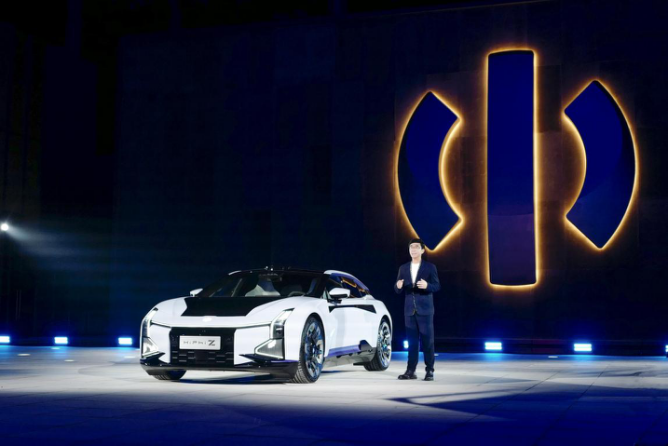英文Markdown
文 | Luoji
If you want to choose a car that is suitable for carrying children and emphasizes comfort, I would recommend ideal L9; if you focus on service and pursue style, then choose NIO ET7; and if you want to choose a car that can be directly used as a prop in a sci-fi movie with a future theme among the current mass-produced cars, then there is only one best answer – GAC HiPhi Z.
Among the new forces of car making, GAC’s presence is not strong. Except for the three big hitters of Li Xiaolai, they are in the second camp, such as Nazha and Leapmotor, all of which have more exposure rates than GAC HiPhi Z. GAC’s main camp is in the luxury car field. In addition to being priced higher and limited in quantity, a more important reason is its extremely sci-fi design, which also creates a sense of distance that does not belong to one’s own world (time dimension and demand level).
This sense of distance is partly due to the overly advanced shape that makes people feel that it does not belong to their own era, and on the other hand, the alternative temperament makes it difficult for people to find a place that fits their own needs. It is precisely because of this sense of distance that many people who know GAC HiPhi Z find it difficult to have a good impression of it. More commonly, they give the evaluation of “flashy but impractical” before understanding it more.
Of course, when a product is detached enough from the masses, it has the potential to be loved by a niche market. With a starting price of nearly 600,000 yuan and a top configuration of up to 800,000 yuan, since the delivery of HiPhi X began in May last year, there have been steady sales of 400-500 units every month. As of May this year, the cumulative amount of new car insurance for the HiPhi X reached 6,286 units, which is about to exceed the 6,148 units of the Porsche Taycan.
In other words, in the field of electric cars above 600,000 yuan, HiPhi X has become the best-selling model in China, far surpassing models like Model S and EQS. This achievement also shows that GAC HiPhi’s positioning may be a bit flashy, but it is by no means impractical, and GAC HiPhi’s second mass-produced car that was just officially released – HiPhi Z, is also worth our respectful attitude to get to know and understand.
Getting to know HiPhi Z can start with an important dimension parameter, and that is the wheelbase. HiPhi Z has a wheelbase of 3150mm, which is exactly the same as HiPhi X, which is enough to show that they belong to the same platform and the same level, which is a medium and large car. This level of electric sedan includes Porsche Taycan, Tesla Model S and NIO’s ET7.
As for Mercedes-Benz’s EQS, although the appearance is not too large, it is already a large car with a wheelbase of more than 3.2 meters and a length of more than 5.2 meters and belongs to a higher level. We can compare the specific parameter differences through the data in the table:
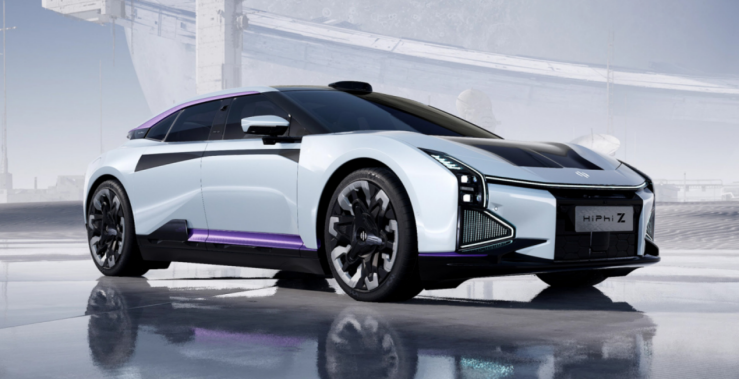

It can be seen that although the wheelbase of HiPhi Z leads the mid-to-large segment, with a length of 5036mm, it is still shorter than NIO ET7. While the length of the Model S, which is 57mm shorter than HiPhi Z, has a gap of 190mm in terms of wheelbase compared to the former.
In other words, even among the pure electric vehicle models, HiPhi Z has a prominent “wheelbase to length ratio”. This is an important feature of the exterior proportions of HiPhi Z, where it has a longer wheelbase but shorter body length.
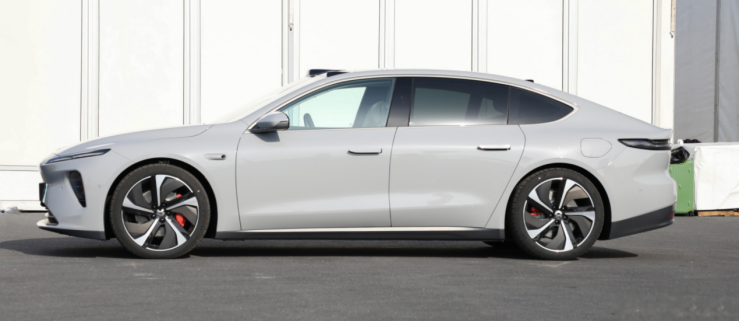
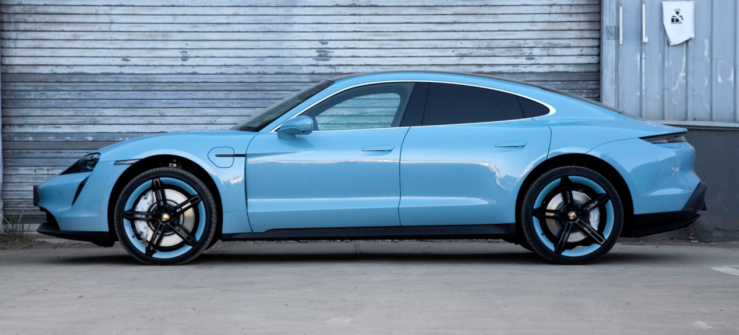
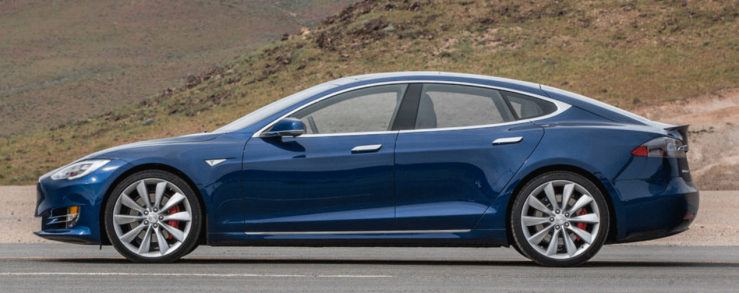
The difference in the side profile is clear at a glance. Firstly, focusing on the A-pillar lines, the A-pillar extension lines of Taycan and Model S are generally aligned with the front wheel hub, while the angle of ET7 is slightly off, but it is also not far from the wheel hub. This is a classic side profile design which highlights the sense of motion and creates an elegant proportion of a long front and a rear cabin.
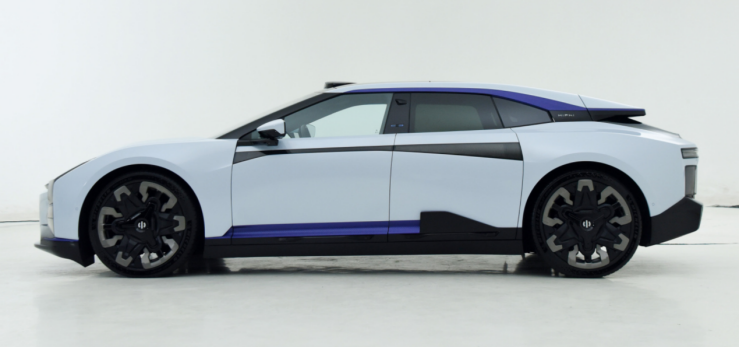
Looking at the HiPhi Z again, the A-pillar’s extension line goes straight to the top of the front wheels, a feature that is usually found in MPV models in conventional fuel vehicles. However, in the era of electric vehicles, after eliminating the problem of engine compartment arrangement, some car models that pursue interior space have also adopted similar styles. If pursuing performance and sportsmanship, pure electric vehicles will still retain the design of A-pillar extension lines aiming at the front wheel hub.
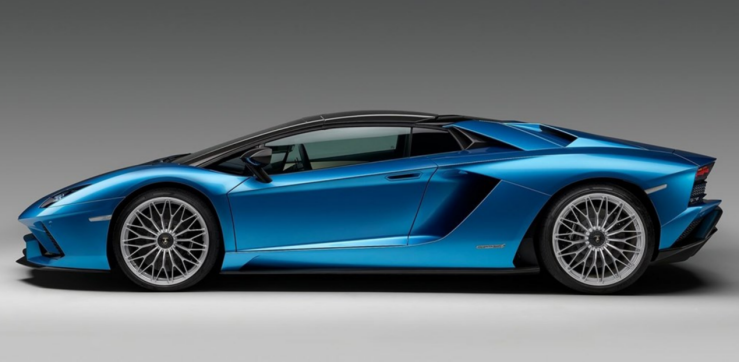 The fact that HiPhi Z is not a sports car doesn’t mean it doesn’t have strong sporty features. On the contrary, although its side posture differs significantly from that of models such as the Model S and Taycan, HiPhi Z still has a strong sporty character. Its sportiness is closer to that of a mid-engine supercar like Lamborghini, compared to traditional front and rear drive petrol cars.
The fact that HiPhi Z is not a sports car doesn’t mean it doesn’t have strong sporty features. On the contrary, although its side posture differs significantly from that of models such as the Model S and Taycan, HiPhi Z still has a strong sporty character. Its sportiness is closer to that of a mid-engine supercar like Lamborghini, compared to traditional front and rear drive petrol cars.
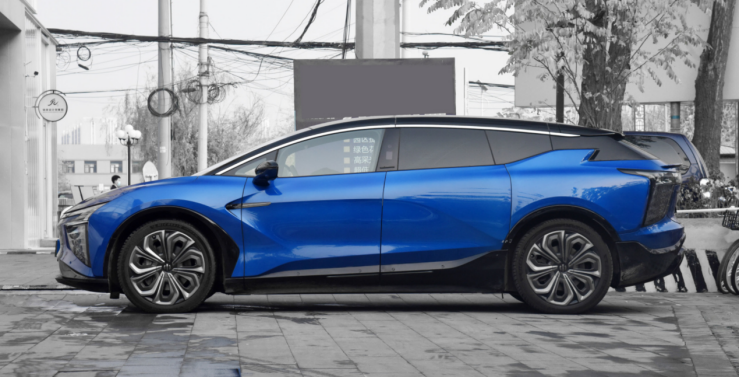
In fact, the design of HiPhi Z follows the same lineage as that of HiPhi X, although the latter’s cockpit is more forward-looking, and the overall styling is closer to an MPV than an SUV. However, there are still significant differences between the two HiPhi models. The passenger cabin of HiPhi Z is clearly farther back, which means that although it has the same wheelbase, the vertical space inside HiPhi Z is probably not as spacious as that in HiPhi X, but compared with other pure electric vehicles in the same category, HiPhi Z still has advantages.
#
In addition to the outstanding wheelbase ratio, HiPhi Z’s control of the body height is also excellent. Its height of 1439mm is much lower than that of ET7 and EQS, which are both over 1.5 meters tall, and 6mm lower than that of the Model S. Among pure electric vehicles of the same level, it is only slightly higher than Porsche’s Taycan.
Because the battery pack needs to be arranged underneath, the control of the height of a pure electric car is a challenge. In order to ensure the vertical space inside the car, the overall styling is often sacrificed to raise the height of the car, resulting in a bulky side profile. HiPhi Z uses the current popular CTP (battery directly integrated into the battery pack) technology, which should also be effective in controlling the height of the car.
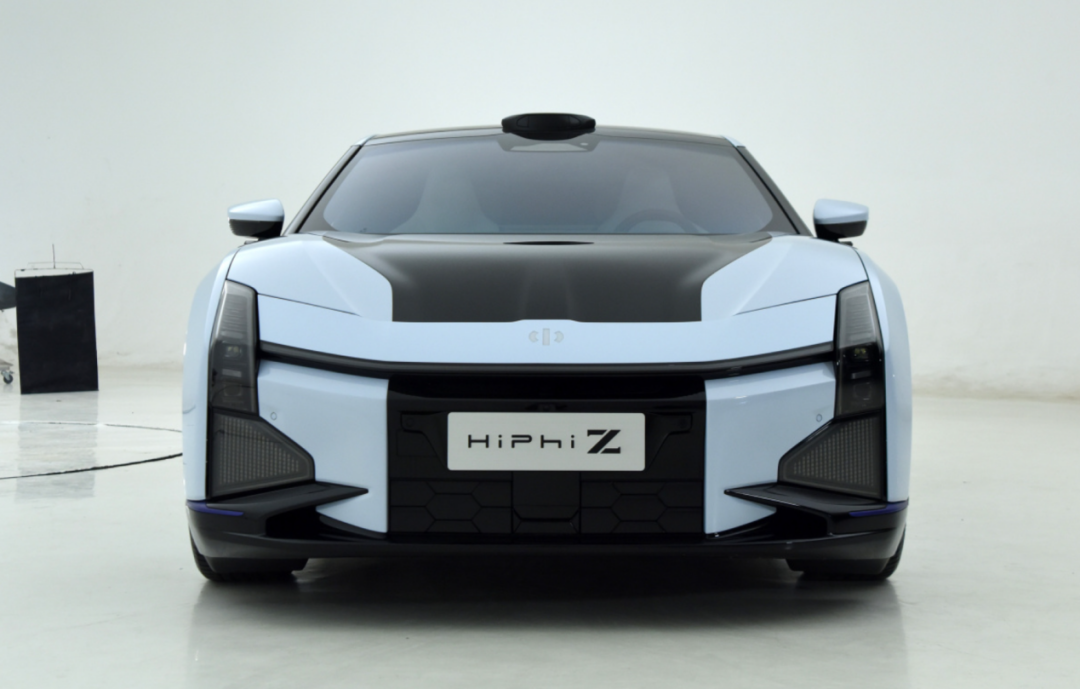
Compared to size and overall proportions, HiPhi Z is more distinctive in its local design. Compared to HiPhi X, HiPhi Z uses more black block decorations, especially on the hood and the part below the grille, where the black block area even exceeds the color of the car body itself, and straight lines and sharp angles are heavily used, showing a strong mecha-style.
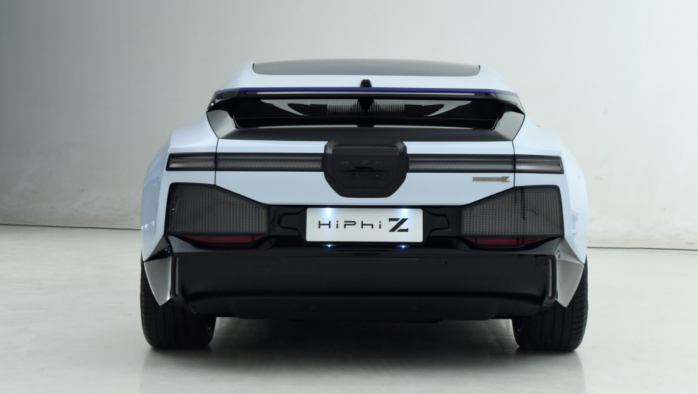
The design of the tail is even more complex, making it almost impossible to find the rear window. Apart from the lower bumper and the middle black block, most of the positions are occupied by various functional lighting systems.We have already witnessed the gorgeousness of the exterior light language on HiPhi X. HiPhi Z has pushed this to the extreme. The light components on the front and rear of the car have been significantly increased, and even a light component has been installed on the two side doors, including the star ring ISD screen system and the second-generation PML programmable intelligent headlamp, together forming the intelligent light interaction system outside the HiPhi X.
This complex lighting system is difficult to describe in words. The light components on the front, side, and rear of the car can communicate with occupants, pedestrians, or other vehicles on the road through light changes, expressions, and text displays. The entire car has 4066 LED lights, giving the car a soul-like feeling.

However, lighting is only a part of the interaction between HiPhi Z and humans. The high tech doors of the “six-door” HiPhi X has inspired the design of the doors of HiPhi Z. This time, instead of the upward opening method, it adopts the design of a side-opening door similar to Rolls-Royce. The opening angle of each door is nearly vertical, which not only has a visual impact but also has practicability, making it easier to get in and out of the car.
Of course, borderless and electric opening and closing are expected on HiPhi Z. It is worth mentioning that HiPhi Z has introduced ultra-wideband wireless communication technology with a positioning accuracy of 10 centimeters. When the car owner approaches with the key, the vehicle can accurately detect the location and control the timing and angle of door opening. At the same time, the ISD interactive light on the door will welcome the owner with changing light and text displays when the owner enters within a 5-meter range.
HiPhi Z’s control of ceremony is really unprecedented in the industry.
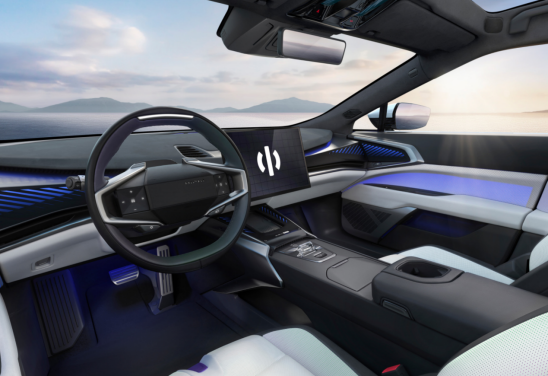
As for the interior, HiPhi Z did not continue the three-screen layout of HiPhi X, canceled the entertainment screen on the co-pilot side, and even canceled the instrument screen behind the steering wheel. Only a large central control screen was retained in the middle. However, the most prominent feature of the HiPhi Z’s interior is still this screen. For the first time, the high-tech arm can be moved up, down, left, and right, and rotated, and it was named “HiPhi Bot”.
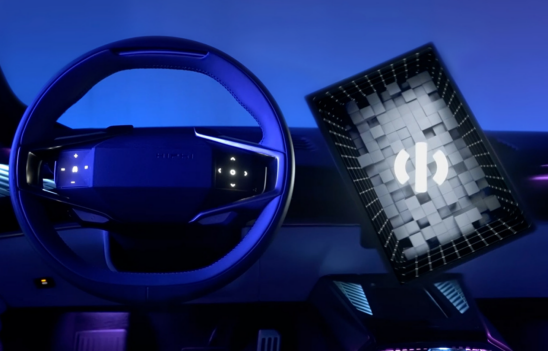 Friends who have used a computer screen mechanical arm should experience the operation of arbitrarily manipulating the screen position. HiPhi Bot’s mechanical arm is fully electrically driven, with 8 directions adjustable, 4 degrees of freedom, including up and down pitching, left and right tilting, and vertical/horizontal rotation. Each dimension supports infinite adjustment, which can be automatically adjusted to the appropriate angle and position facing the main driver and co-pilot, or manually found in the desired state.
Friends who have used a computer screen mechanical arm should experience the operation of arbitrarily manipulating the screen position. HiPhi Bot’s mechanical arm is fully electrically driven, with 8 directions adjustable, 4 degrees of freedom, including up and down pitching, left and right tilting, and vertical/horizontal rotation. Each dimension supports infinite adjustment, which can be automatically adjusted to the appropriate angle and position facing the main driver and co-pilot, or manually found in the desired state.
The practical significance of this adjustment ability is self-evident, and Gaohe is naturally not limited to practicality, but has provided different programming settings for its various modes. It can nod and gesture through the screen, or make various movements with the rhythm of the music.
At present, in the digital product field, there has not yet appeared a screen mechanical arm that can be electrically adjusted. Gaohe has applied it to cars first, which means that it needs to meet the safety standards in various scenarios, that is, the “automotive grade”. Once it reaches the automotive grade standard, the technology and material costs behind it will increase significantly, so even with the precedent of HiPhi Z, we may not see similar configurations in other manufacturers’ models for a long time.
Taking our eyes off the central control screen, the highlight of HiPhi Z’s interior lighting system is no less than that of the exterior. Various shaped lighting systems are installed in the central control panel, door panels, storage compartments, and corresponding positions in the rear row. Their main function is not illumination and not only provides simple ambiance effects, but also can be linked with the central control screen’s mechanical arm, and cooperate with the car’s audio system to create various atmospheric scenes.
Similar to the exterior, the cockpit of HiPhi Z also uses a lot of tough straight lines and right angles, which has a strong contrast with NIO ET7’s pursuit of simplicity and Avta 11’s pursuit of softness. Except for the circular steering wheel, it is almost impossible to find rounded curves inside the car. Even the inside of the steering wheel is created with straight lines and materials with a cold sense of technology to create a strong three-dimensional sense.The HiPhi Z sets itself apart from conventional sedans by adopting a four-seat layout, sacrificing one seat in exchange for more thorough comfort and luxury. Notably, the front and rear seats of the HiPhi Z feature different design styles. The front seats adopt a bucket-shaped design focusing on sports and wrap-around comfort, while the rear seats feature a cocoon-style design focusing on comfort and surround feeling, with side wings on the headrests to enhance the differentiated riding experience between the front and rear rows.
#
Undoubtedly, the most significant selling point of the HiPhi Z is the sense of technology embodied by its design. While little emphasis was placed on the core technologies such as performance, handling, and range during the Gaokin Launch event, the specific technical and material specifications are undoubtedly top-notch in the industry.
The basic suspension structure of the HiPhi Z consists of a full-aluminum double-wishbone front suspension and a five-link rear suspension, and the appearance of the air suspension is expected. The rear-wheel steering system, which has already been fitted to the HiPhi X, also appears naturally on the HiPhi Z. As a car model that sells primarily in the luxury market for over CNY 600,000, this is also an important feature that sets the HiPhi Z apart from other new forces brands.
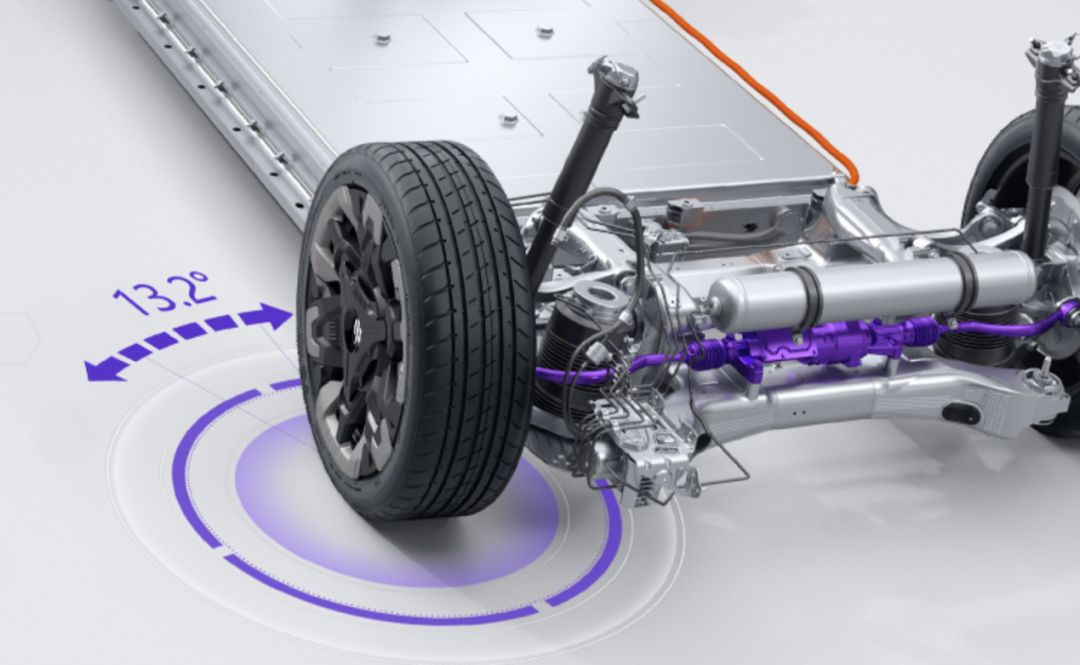
The rear-wheel steering angle of the HiPhi Z is +/-6.6°, which shortens its turning radius to 5.7 meters, almost comparable to some compact two-box cars. Considering its length of over 5 meters, the rear-wheel steering makes driving the HiPhi Z in the city more relaxed.
Intelligent driving ability is an important indicator of the technological strength of new car-making forces. In this regard, the HiPhi Z has made progress compared to the HiPhi X, using a 128-line Hesai LiDAR, and matching 13 cameras, five millimeter wave radars, 12 ultrasonic radars, as well as a 3-zone release sensor on the car’s steering wheel, as the hardware base for its intelligent driving.
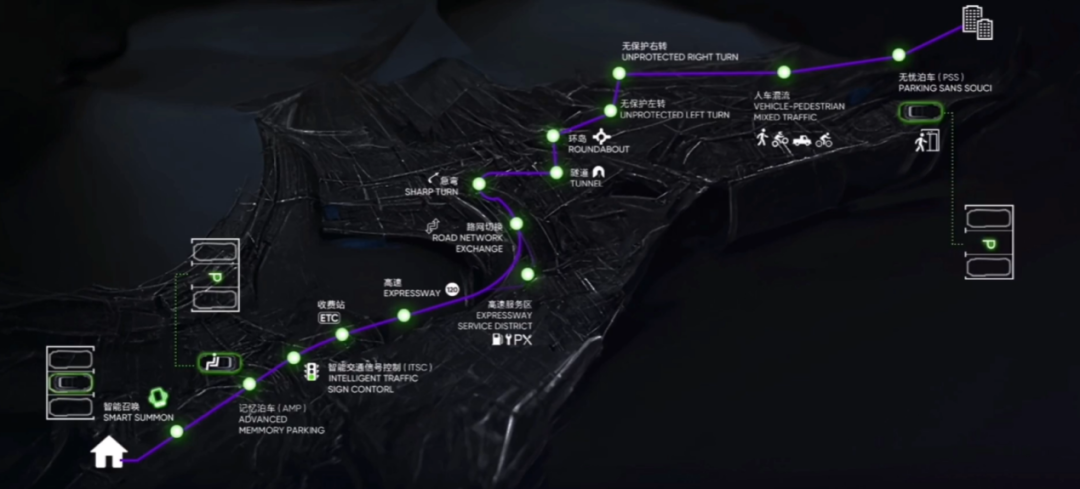
According to Gaokin’s description, with the help of high-precision maps and location modules, the HiPhi Z can achieve a series of driving assistance functions such as intelligent summoning, memory parking, unprotected left and right turns, and automatic avoidance, basically reaching the most advanced level on the market at the moment. However, Gaokin says that it will deliver these functions gradually until 2023, and it is not good to say when the full realization of these functions will be achieved.Regarding the performance and range, the specific power parameters of the HiPhi Z’s motor are currently unknown. The known information includes the use of a 120kWh battery pack, which can achieve a range of 705 kilometers under the CLTC condition, a level that is considered excellent for luxury EVs.
As for information related to intelligent driving, battery, and motor, they are not as significant as the design and intelligent experience configuration of the HiPhi Z. However, for the target customers of GAC, these are not issues since the differences in range, performance, and intelligent driving among various car manufacturers are not significant enough to differentiate the levels, thanks to the relatively unified supply chain. Under such circumstances, how car manufacturers make breakthroughs in product design and definition becomes the decisive factor for success or failure.
I once wrote an article titled “Limitation as an Inspiration: Aim at Tesla, but Never Surpass Tesla,” and in fact, GAC founder Ding Lei’s entry into the new energy vehicle industry was initially inspired by Elon Musk’s vision. However, as shown by GAC’s two products, Ding Lei did not regard Tesla as a benchmark. Despite having some shadows of Tesla, both the HiPhi X and HiPhi Z are more radical and avant-garde than Tesla.
When asked about his opinion on the sales of HiPhi X in an interview, GAC founder Ding Lei expressed his satisfaction. In fact, considering GAC’s pricing and positioning, the sales of HiPhi X have already achieved a milestone breakthrough among Chinese brands.
Now that Tesla has shifted its focus to the low-priced mass market, GAC has developed its own style in the high-end market. Although this positioning may be challenging to enter the mainstream market, having a brand like GAC in the EV market is a good thing for China, the world, the present, and the future.
This article is a translation by ChatGPT of a Chinese report from 42HOW. If you have any questions about it, please email bd@42how.com.
